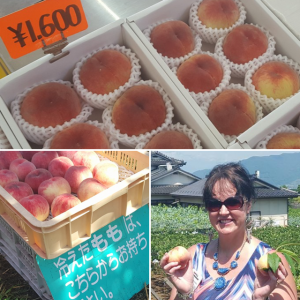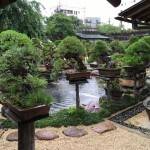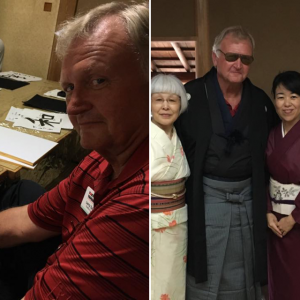This is the trip of a life time!

My wife, Janice, and I boarded a plane July 7 for Japan as part of an Iowa Farm Bureau trip. As I write this blog post, I’m sitting in a hotel room in the Tokyo where 13 million people live within the city limits and another 4 million commute here every day for work.
This city is a marvelous network of roads, railways and forms of transportation. There are places where the roads are stacked six deep above ground plus there is underground transportation outside my view. No wonder the young female producer, who visited my farm in 2012 with a Japanese film crew, stood in awe of the countryside and said this is what she had dreamed of. I imagine she had never before see so many miles of farmland nor such sparsely populated communities.

Fast forward about four years and now I am the one in awe. I had no idea until now that there isn’t green grass – or any open space – in Tokyo. A lawn mower would be out of place in this city where buildings stretch to the horizon. From ground level, a person notices concrete everywhere: buildings, roadways and sidewalks. It took a visit to the observation deck of the Tokyo Skytree to see patches of green thanks to our bird’s eye view of the tree tops.
Another observation that amazed us is the cleanliness of the city. There are millions of people in this city – and no visible trash cans – yet there is no garbage to be found. Janice saw one bottle tucked into a shrub, but that was the only piece of garbage we saw during an entire day touring the city!

Not only is Tokyo clean, but it’s safe. As we left our bus to tour, we were told you could leave all your valuables onboard. What a difference this was from Ukraine where you couldn’t set a bag down at all without worrying about it getting taken!
Cleanliness and honesty are valued in Japanese culture. Upon entering a temple, we were shown the fountain of water for cleansing. The Japanese also take great pride in honoring customs. We visited a Bonsai Garden museum where we learned about green tea. We also tried writing in their language and dressed up as a traditional warrior. What fun!

I learned more about the Japanese culture while seated for an evening meal next to Evan Mangino, with the USDA’s Foreign Agriculture Service; Yusaku Nakajima, senior staff of the International Affairs division for Yamanashi Prefectural Government; and Kim Heidemann, executive director of Iowa Sister States. The conversation was amazing!
Our next leg of this journey is a visit to Iowa’s Sister State of Yamanashi. Hopefully, we’ll find some pigs along the way! (Remember, Iowa’s friendship with Japan was strengthened by the 1960 hog lift. Click here to learn more.)
I’m looking forward to more days of filled with fun learning experiences. And, of course, I plan to blog about them next week! In the meantime, you might enjoy reading the following blogs written by others who are with me on this trip.
Related Posts:
